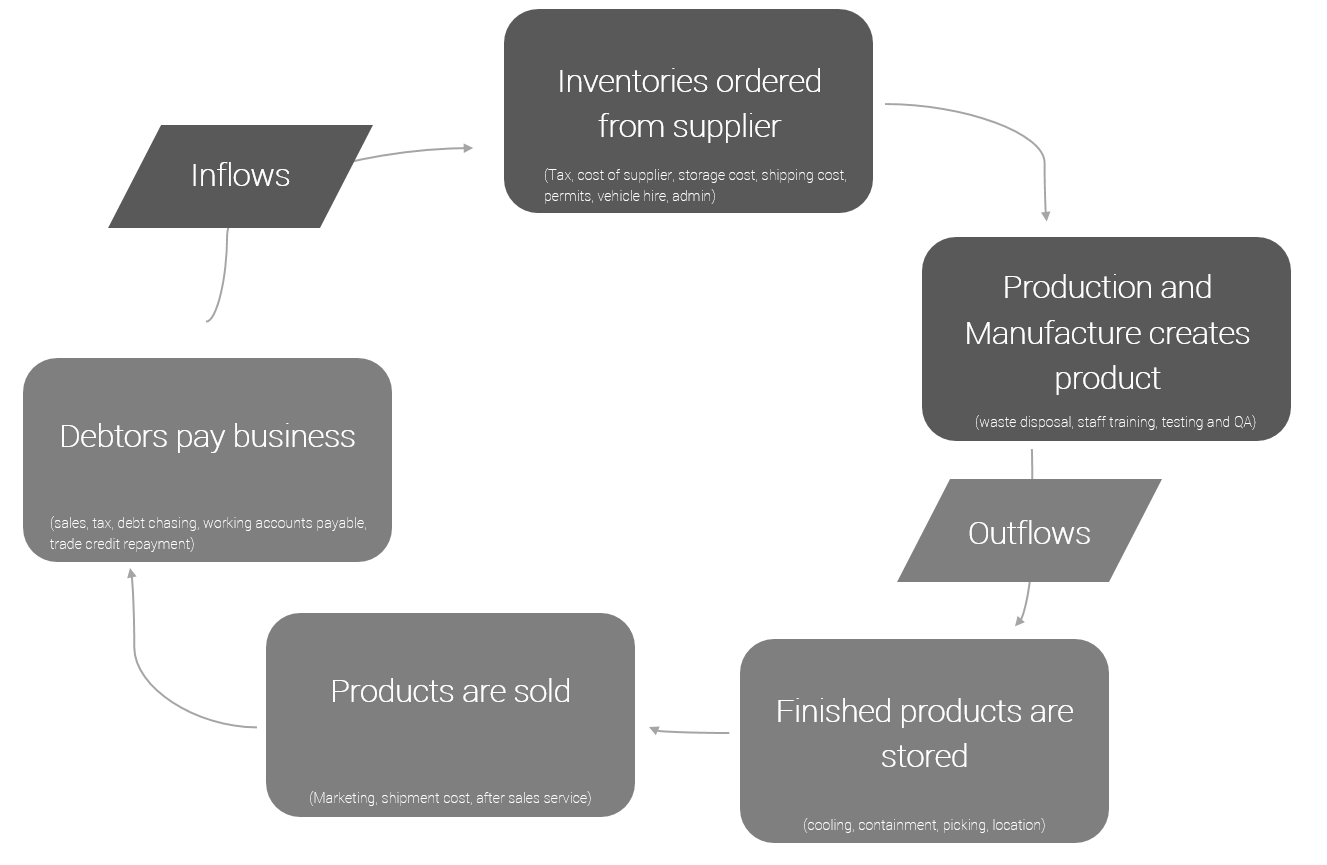The working capital cycle is a proportion of a businesses working capital that is used to allow a business to operate normally, it is the funds required by a business in order to continue trading efficiently. Without a business being able to calculate how much working capital it needs in order to operate, then it may find it hard to continue to function, the working capital cycle involves anything from inventory and supplies, to production and storage. Without proper working capital, it could lead to business failure.

The Working Capital Cycle
The working cycle has limited use as a single planning tool, however when combined with multiple tools, it can provide a very powerful overview of what a business works with month, to month. Just because a business has inflows of $1m each month, it does not mean that they make $1m profit. The working capital cycle will also allow a company to identify any ways of keeping a positive cash flow through better trade terms as well.
Each ‘stage’ of the capital cycle has multiple costs associated with it. Just because a product needs to be stored, does not mean it has not cost, there may be refrigeration cost, it could be perishable, it may need a security guard to look after the facility, the lights and electricity around the building all need to be paid for. It is important that a customer receives the product as soon as it is made, as it means that overall there is less cost associated with the product, additionally for products like clothing and fashion accessories or technology, the longer it is stored could also mean that its value is decreased as it goes out of fashion.
Over trading could also mean that a company may not be able to pay for the process to be completed using its normal working capital and may have to secure new funds for the time being until the debt is paid after they have sold the product.